 W
WFranciszka Arnsztajnowa was a Polish poet, playwright, and translator of Jewish descent. Much of her creative oeuvre falls within the Young Poland period, stylistically encompassing the twilight of neo-romanticism. She is called "the legend of Lublin".
 W
WThe Kraków pogrom was a violent anti-Jewish incident that occurred on 11 August 1945 in the Soviet-occupied city of Kraków, Poland. The incident was part of anti-Jewish violence in Poland towards and after the end of World War II. The immediate cause of the pogrom was a blood libel rumour of a ritual murder of Polish children by Jews in the city. An allegation that a child had been abducted by a Jewish woman had grown to allegations that Jews had killed up to 80 children over the course of weeks. These allegations led to violence against Jews, as well as some Poles mistaken for Jews, in the Kazimierz quarter of the city and the burning of the Kupa Synagogue. At least one person was killed and an unknown number were injured.
Stanisław Bułak-Bałachowicz was a notable general, military commander and veteran of World War I, the Russian Civil War, the Estonian War of Independence, the Polish-Bolshevik War and the Invasion of Poland at the start of World War II.
 W
WMieczysław Centnerszwer was a Polish chemist and professor at the Technical University of Riga and at the University of Warsaw. He was killed by the Gestapo, as a Jew in hiding.
 W
WAntoni Cieszyński was a Polish physician, dentist and surgeon.
 W
WJózef Karol Cornobis was a Polish theatre actor and director. He was killed during the Second World War; he either was shot by German troops in Toruń in 1939 or died in Auschwitz concentration camp.
 W
WEdward Dembowski was a Polish philosopher, literary critic, journalist, and leftist independence activist.
 W
WWładysław Dobrzaniecki was a Polish physician and surgeon.
 W
WTheodor van Eupen was a member of the SS of Nazi Germany. A Holocaust perpetrator, he served as the commandant of the Treblinka I forced-labour camp (Arbeitslager) in occupied Poland during its entire course of operation. Unlike the parallel Treblinka extermination camp subordinate to the Operation Reinhard authorities in Berlin, Treblinka I was controlled by the SS and Police Leader in Warsaw. The labour camp was liquidated on 23 July 1944, ahead of the Soviet advance. By then, more than half of its cumulative number of some 20,000 inmates had died from summary executions, hunger, disease and mistreatment. The regular workforce consisted of 1,000–2,000 prisoners, terrorized by staff of about a dozen SS-men and 100 Wachmänner guards.
 W
WLeon Felhendler was a Polish resistance fighter known for his role in organizing the 1943 prisoner uprising at Sobibor extermination camp together with Alexander Pechersky.
 W
WPaweł Finder was a Polish Communist leader and First Secretary of the Polish Workers' Party (PPR) from 1943 to 1944.
 W
WHerbert Floss or Herbert Floß was an SS functionary of Nazi Germany who served as acting commander of the Sobibor extermination camp during the Holocaust in Poland. He also served as cremation expert in Camp II Totenlager at the Treblinka extermination camp.
 W
WMałgorzata Fornalska was a Polish communist activist and anti-Nazi resistance fighter.
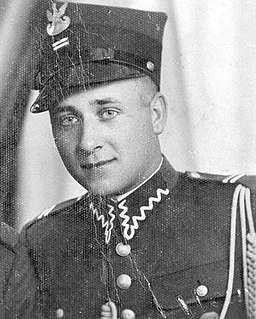 W
WJózef Franczak was a soldier of the Polish Army, Armia Krajowa World War II resistance, and last of the cursed soldiers – members of the militant anti-communist resistance in Poland. He used codenames Lalek, Laluś, Laleczka, Guściowa, and fake name Józef Babiński. He was a resistance fighter for 24 out of 45 years of his life.
 W
WThomas Ludwig Werner Freiherr von Fritsch was a member of the German High Command. He was Commander-in-Chief of the German Army from February 1934 until February 1938, when he was forced to resign after he was falsely accused of being homosexual. His ousting was a major step in Adolf Hitler's establishment of tighter control over the armed forces. Just over a year later, before the outbreak of World War II, Fritsch was recalled as Colonel-in-chief of the 12th Artillery Regiment. He died in battle in Poland early in the war.
 W
WMordechai Gebirtig, born Mordecai Bertig, was an influential Yiddish poet and songwriter of the interwar period. He was shot by Germans in the Kraków Ghetto, occupied Poland, during the Holocaust. A number of his Yiddish songs are sung to this day, including Es brent, Reyzele, Moyshele Mayn Fraynd, and Kinder Yorn.
 W
WZuzanna Ginczanka, pen name of Zuzanna Polina Gincburg was a Polish-Jewish poet of the interwar period. Although she published only a single collection of poetry in her lifetime, the book O centaurach created a sensation in Poland's literary circles. She was arrested and executed in Kraków shortly before the end of World War II.
 W
WBen Zion Halberstam (1874–1941) was the second Bobover Rebbe. He was murdered by the Nazis in 1941.
 W
WKazimierz Junosza-Stępowski was a Polish stage and film actor. He was a legendary figure in Polish cinema who had appeared in the earliest Polish films in 1902. Junosza-Stępowski was killed while trying to protect his wife from members of the Polish Home Army, who had discovered she was an informer for the Gestapo.
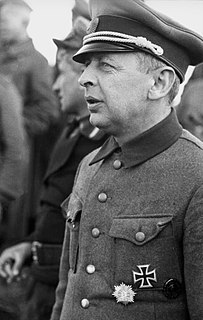 W
WBronislav Vladislavovich Stroganof Kaminski was a Russian anti-communist collaborationist and the commander of the Kaminski Brigade, an anti-partisan and rear-security formation made up of people from the so-called Lokot Autonomy territory in the Nazi Germany occupied areas of Russia, which was later incorporated into the Waffen-SS as the SS Sturmbrigade RONA ]. Older publications mistakenly give his first name as Mieczyslaw. Under Kamniski's command, the unit committed numerous war crimes and atrocities in the German-occupied Soviet Union and Poland.
 W
WHelmut Kapp was a member of the Gestapo during World War II. He was killed in 1943 by a partisan death squad in Jędrzejów, Poland.
 W
WFranz Kutschera was an Austrian Nazi politician and government official. He held numerous political and military positions with the Nazi Party and the Schutzstaffel (SS) both before and after the German Anschluss of Austria in 1938. During World War II he served with the SS in France, Yugoslavia and the Soviet Union.
 W
WGrand Rabbi Shmuel Shlomo Leiner (1909–1942) was the Radziner Rebbe.
 W
WAntoni Marian Łomnicki was a Polish mathematician.
 W
WRoman Longchamps de Bérier (1883–1941) was a Polish lawyer and university professor, one of the most notable specialists in civil law of his generation and the last rector of the Jan Kazimierz University of Lwów. He was murdered in what became known as the Massacre of Lwów professors.
 W
WGabriel Józef Narutowicz was a Polish professor of hydroelectric engineering and politician who served as the first President of Poland from 11 December 1922 until his assassination on 16 December, five days after assuming office. He previously served as the Minister of Public Works from 1920 to 1921 and briefly as Minister of Foreign Affairs in 1922. A renowned engineer and politically independent, Narutowicz was the first elected head of state following Poland's regained sovereignty from partitioning powers.
 W
WThe Pacification of Wujek was a strike-breaking action by the Polish police and army at the Wujek Coal Mine in Katowice, Poland, culminating in the massacre of nine striking miners on December 16, 1981.
 W
WMessaoud Hai Victor "Young" Perez was a Tunisian Jewish boxer, who became the World Flyweight Champion in 1931 and 1932, fighting under his ring name "Young Perez". He was managed by Leon Bellier.
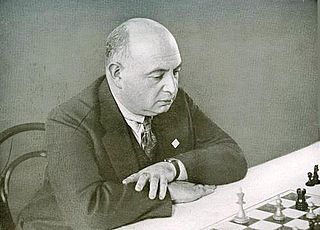 W
WDawid Przepiórka was a prominent Polish chess player of the early twentieth century.
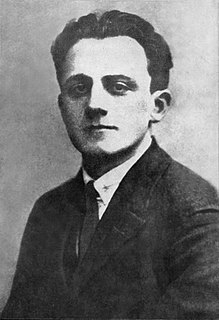 W
WEmanuel Ringelblum was a Polish-Jewish historian, politician and social worker, known for his Notes from the Warsaw Ghetto, Notes on the Refugees in Zbąszyn chronicling the deportation of Jews from the town of Zbąszyń, and the so-called Ringelblum Archive of the Warsaw Ghetto.
 W
WBruno Schulz was a Polish Jewish writer, fine artist, literary critic and art teacher. He is regarded as one of the great Polish-language prose stylists of the 20th century. In 1938, he was awarded the Polish Academy of Literature's prestigious Golden Laurel award. Several of Schulz's works were lost in the Holocaust, including short stories from the early 1940s and his final, unfinished novel The Messiah. Schulz was shot and killed by a German Nazi, a Gestapo officer, in 1942 while walking back home toward Drohobycz Ghetto with a loaf of bread.
 W
WKlara Segałowicz was a Polish actress. She was active in theatre and film between 1921 and 1939. A Jew, she and her husband were arrested following the invasion of Poland in 1939. They were interned in the Warsaw Ghetto and later held at Pawiak prison, where they were shot and killed in 1943.
 W
WKalonymus Kalman Shapira, was the Grand Rabbi of Piaseczno, Poland, who authored a number of works and was murdered by the Nazis during the Holocaust.
 W
WIgnacy Skorupka was a Polish priest, chaplain of the Polish Army. He died during the battle of Warsaw. He became one of the most famous casualties of the battle.
 W
WLeon Sperling was a Polish Olympic footballer.
 W
WWłodzimierz Stożek was a Polish mathematician of the Lwów School of Mathematics.
 W
WKarol Wacław Świerczewski was a Polish and Soviet Red Army general and statesman. He was a Bolshevik Party member during the Russian Civil War and a Soviet officer in the wars fought abroad by the Soviet Union including the one against Polish as well as Ukrainian Republics and in Republican Spain. In 1939 he participated in the Soviet invasion of Poland again. At the end of World War II in Europe he was installed as one of leaders of the Soviet-sponsored Polish Provisional Government of National Unity. Soon later, Świerczewski died in a country-road ambush shot by the militants from OUN-UPA. He was an icon of communist propaganda for the following several decades.
 W
WThe Wilno school massacre was a school shooting that occurred on 6 May 1925 at the Joachim Lelewel High School in Wilno, Poland. During the final exams, at about 11 a.m., at least two eighth-grade students attacked the board of examiners with revolvers and hand grenades, killing two students, one teacher, and themselves.
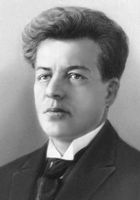 W
WPyotr Lazarevich Voykov was a Ukrainian Bolshevik revolutionary and Soviet diplomat known as one of the participants in the decision to execute the former Russian Emperor Nicholas II and his family members. Minister Plenipotentiary of the Soviet Union to the Polish Republic (1924–1927), he was assassinated in Warsaw by a White émigré. The use of Voykov's name in toponymy in modern Russia has been a cause of notable controversy.
 W
WZbigniew Eugeniusz Godlewski was a Polish teenager shot dead by security forces during the Polish 1970 protests in the city of Gdynia. The event was popularized across the country in the poem and song, known by the name of Ballad of Janek Wiśniewski.
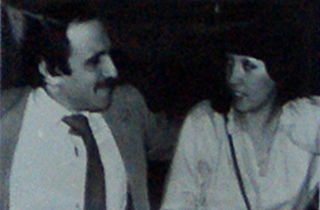 W
WAndrzej Zaucha was a Polish rhythm & blues and pop-jazz singer, occasionally also an actor. He was a self-taught musician who never took any professional vocal lessons.
 W
WRabbi Menachem Ziemba (1883–1943) was a distinguished pre-World War II Rabbi, known as a Talmudic genius and prodigy. He is known to be fluent in all of Talmud as well as many of the works of the later Rabbis such as Rabbi Joseph Rosen and Rabbi Meir Simcha of Dvinsk. He was gunned down by the Germans in the Warsaw Ghetto.